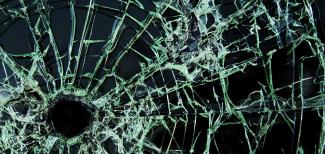Broken Borders
Curator's Talk with Adriana Estrada Centelles Saturday April 28th, Access Gallery 2pm, Satellite Gallery 4pm. (presented with the Canadian Art Hop, Vancouver)
Opening Reception: Friday March 9th, Satellite Gallery 6-9pm, Access Gallery 8-11pm
Performance by Rosa Maria Robles, Friday March 9th, 9pm at Access Gallery.
Curator's Tour: Saturday, March 17, 2pm at Satellite Gallery (Please RSVP by March 15 to reserve your place by contacting us at 604-681-8425 or debbie@satellitegallery.ca)
Satellite Gallery and Access Gallery co-present Mexican curator Adriana Estrada Centelles’ group exhibition Broken Borders.
The exhibition reflects on the sociopolitical situation that has affected Mexico and more recently other countries, such as Canada and the United States, for the past six years—the drug war. This war has resulted in more than 40,000 deaths in Mexico and has shifted the everyday lives of Mexicans into a permanent state of alert, uncertainty and terror. Teresa Margolles, Rosa María Robles, Marcos Ramírez Erre and Jorge Malacón have depicted, through their work, some of the mechanisms of this war that refer to a more complex and global political structure. They unveil the drug war as a war machine and a new power structure of necropolitics.
Broken Borders is divided and presented in two spaces, the Satellite Gallery and Access Gallery. The main purpose is to raise awareness of this complex and global war, not only as Mexico’s social and political problem, but also as a worldwide economic model that affects all societies, including Canada. In order to experience the entire exhibition, the public will move from one gallery to another and will have the opportunity to engage differently with the streets of Vancouver's Downtown Eastside. Drug trafficking and consumption is a constant and evident problem in this area of the city. Without any prejudice against illegal drug consumption, the exhibition opens up spaces of reflection on the public’s (in)direct participation that feeds violence and strengthens the expansion of the war on drugs.
Teresa Margolles is an artist based in Mexico City. Since she joined the collective SEMEFO, derived from Mexico’s Medical Forensic Service, she uses the morgue as her atelier and works only with the bodies of those who suffered a violent death, in order to rescue them from invisibility. The victims’ anonymity is a result of inhuman relationships in modern overcrowded societies.
Rosa María Robles is a Culiacán-based artist. Her work reflects on violence, power, impunity and drug-trafficking subculture—narcocultura. Robles transports a social problem into the core of aesthetic perception by bringing violence into the realm of art; beauty and the sublime are abruptly substituted with all that is terrible and wretched.
Marcos Ramírez Erre is a Tijuana-based artist. Located on the US-Mexico border, Erre explores the role of history, communication, economics and militarism in the development of cultural stereotypes in border-control policies and situations of conflict. Erre points out the polarities of border communities, criticism of political injustice and global disinformation.
Jorge Malacón is an artist based in Mexico City who locates his work in the latest representation of violence altered by mass media. He also condemns the process of dehumanization affected by new mechanisms of communication in Mexican photojournalism, or so-called narco-journalism.
This exhibition was made possible through the support of the Michael O’Brian Family Foundation, the Killy Foundation and the Audain Endowment for Curatorial Studies through the Department of Art History, Visual Art and Theory in collaboration with the Morris and Helen Belkin Art Gallery at the University of British Columbia.
